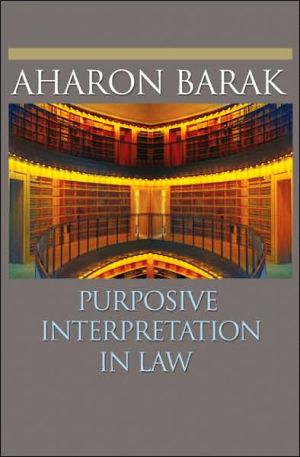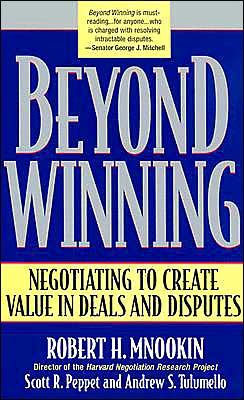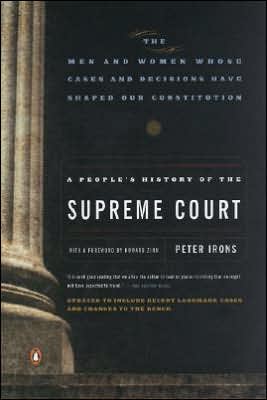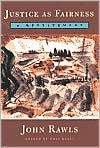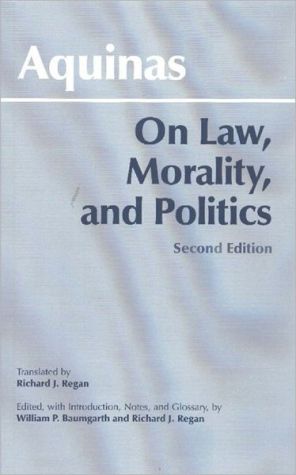Purposive Interpretation in Law
This book presents a comprehensive theory of legal interpretation, by a leading judge and legal theorist. Currently, legal philosophers and jurists apply different theories of interpretation to constitutions, statutes, rules, wills, and contracts. Aharon Barak argues that an alternative approach—purposive interpretation—allows jurists and scholars to approach all legal texts in a similar manner while remaining sensitive to the important differences. Moreover, regardless of whether purposive...
Search in google:
"This book offers a comprehensive—indeed magisterial—account of and argument for a more or less unified approach to the interpretation of legal items—rules, regulations, statutes, contracts, wills, trusts, and constitutions. Its thesis is novel and will generate both thought and controversy. That a judge of Aharon Barak's prominence has produced a work of such scholarly depth, jurisprudential insight, and care in research and documentation is itself a major accomplishment."—Frederick Schauer, Frank Stanton Professor of the First Amendment, John F. Kennedy School of Government, Harvard University, author of Playing by the Rules and Profiles, Probabilities, and Stereotypes"This book provides the carefully worked out and sifted results of concentrated thought by a leading judicial scholar and intellect on a topic of first importance to law. Justice Barak puts his approach, called 'purposive interpretation,' on display in elaborate detail that makes his presentation a formidable one. He is a deeply experienced, eminent judge with a deserved reputation for high intelligence, scholarship, wisdom, and reflectiveness about the work of judging—qualities plainly in evidence here."—Frank I. Michelman, Robert Walmsley University Professor of Law, Harvard University, author of Brennan and Democracy David Pannick, QC - The Times One of the most respected judges serving today is Aharon Barak, President of the Supreme Court of Israel. His commitment to the rule of law and constitutional rights, and his encyclopedic knowledge of the history, case law and principles of a wide variety of legal systems, are at the heart of Purposive Interpretation in Law. In this major work of legal philosophy, Barak develops a legal theory to explain how judges should resolve cases which depend on the interpretation of texts, whether contracts, statutes or constitutions.
Purposive Interpretation in Law \ \ By Aharon Barak Princeton University Press \ Copyright © 2005 Princeton University Press\ All right reserved.\ ISBN: 978-0-691-13374-4 \ \ \ Chapter One What Is Legal Interpretation?\ 1. DEFINITION OF LEGAL INTERPRETATION\ On the Concept of Interpretation in Law\ "Interpretation" in law has different meanings. Indeed, the word "interpretation" itself must be interpreted. I define legal interpretation as follows: Legal interpretation is a rational activity that gives meaning to a legal text. The requirement of rationality is key-a coin toss is not interpretive activity. Interpretation is an intellectual activity, concerned with determining the normative message that arises from the text. What the text is and whether it is valid are questions related to interpretation, but they are distinct from it. I assume the existence of a valid legal text. The question is what meaning to attach to that text. According to my definition, then, interpretation shapes the content of the norm "trapped" inside the text. The text that is the object of interpretation may be general (as in a constitution, statute, case law, or custom) or individual (as in a contract or will). It may be written (as in a written constitution or judicial opinion) or oral (as in an oral will or a contract implied-in-fact). The word "text" is not limited to a written text. For purposes of interpretation, any behavior that creates alegal norm is a "text."\ Constrictive Definitions of Legal Interpretation\ The definition of legal interpretation at the core of this book is not the only possible definition. Some theorists define interpretation more narrowly, others, more broadly. Under a narrower or constrictive definition, there is room for interpretation only in places where the text is unclear, such that there are differences of opinion over it. Similarly, a constrictive definition might restrict legal interpretation to finding the meaning that realizes the intent of the legal text's author. I do not adopt these definitions. According to my theory, every legal text requires interpretation. The plainness of a text does not obviate the need for interpretation, because such plainness is itself a result of interpretation. Even a text whose meaning is undisputed requires interpretation, for the absence of dispute is a product of interpretation. Realizing the intent of the author is the goal of one kind of system of interpretation (subjective interpretation). Interpretation, however, can also give the legal text a meaning that actualizes objective standards (objective interpretation). The definition of interpretation (in contrast to systems of interpretation within that definition) cannot be reduced to merely giving meaning that realizes authorial intent.\ Expansive Definitions of Legal Interpretation\ Legal interpretation may also be conceptualized more expansively than my definition permits. For example, Dworkin defines law itself as an interpretive process:\ Legal practice is an exercise in interpretation not just when lawyers interpret documents or statutes but also generally. Propositions of law are not simply descriptive of legal history, in a straightforward way, nor are they simply evaluative in some way divorced from legal history. They are interpretive of legal history, which combines elements of both description and evaluation, but is different from both.\ While Dworkin's approach has been the subject of criticism, an evaluation of his definition and the critique of it are beyond the scope of this book. Dworkin's definition lies at the foundation of his philosophic project, and I respect it. My definition, however, is narrower. It lies at the foundation of a different project, whose concern is giving meaning to a legal text. The two projects are distinct but interrelated. From Dworkin's definition of interpretation, one can derive a system of understanding a legal text such as a constitution or statute. In that sense, Dworkin's (expansive) theory of interpretation becomes one of a variety of systems of interpretation (as defined above).\ The Limits of Interpretation in Law\ My definition of interpretation raises a number of questions of classification. The answers to these questions determine if the standards for interpreting a text can apply to additional legal activities. First, does resolving (antinomic) contradictions in a given legal text constitute interpretive activity? In my view, the answer to that question is yes. Imparting meaning to a given text requires resolving internal contradictions within the text itself. Second, does resolving contradiction between different legal texts on the same normative plane (two statutes, two contracts, two wills), or on different normative planes (constitution and statute, statute and contract, contract and will), constitute interpretive activity? Of course, giving meaning to each of those texts constitutes interpretive activity, but does resolving the contradiction-based on the meaning given-constitute an inherently interpretive activity? The question has no clear answer, other than saying that it depends on the tradition of a given legal system. In my view, however-and depending on the particularities of the legal traditions in question-resolving contradiction between norms arising from different texts is a non-interpretive activity. True, in resolving contradictions between different texts, we give meaning to a legal system. But this giving of meaning constitutes interpretive activity only in Dworkin's broad sense. It does not constitute interpretation in the sense I give to the word. For example, the rule of constitutional supremacy-that a statute which violates a constitutional provision is invalid-is a rule that resolves contradictions, but it is not a rule of interpretation. Third, does filling in a lacuna or gap in a legal text constitute interpretive activity? The German legal tradition distinguishes between ordinary interpretation (einfache Auslegung) and supplementary interpretation (ergänzende Auslegung). Indeed, the answer to this (third) question also depends on the legal tradition in question. I personally distinguish between interpretation in the narrow sense-the interpretation that gives meaning to a legal text-and interpretation in the broad sense, which includes filling gaps in an incomplete text. The justification in calling the second activity interpretive-if only in the broad sense-stems from the fact that it does ultimately give meaning to a text, determining the normative message arising from it. Referring to the addition of an implied term to a contract, Hoffman writes: "It may seem odd to speak of interpretation when, by definition, the term has not been expressed in words, but the only difference is that when we imply a term, we are engaged in interpreting the meaning of the contract as a whole." For this reason, I include correcting the language of the text, as in fixing a mistake, as part of interpretation in the broad sense.\ Why do I insist on distinguishing between interpretation in its broad and narrow sense? The standards governing these two activities are different. Two separate and distinct systems govern the interpretation of an existing text and the completion of an incomplete text. Sometimes, a judge is allowed to interpret a text but is not allowed to fill a gap in it, as in the case of a criminal statute. Of course, so long as we remain sensitive to the distinctions I note, there is nothing wrong with generally referring to both kinds of activities as interpretive. The point is to avoid loading interpretation (in the narrow sense) with a burden it cannot bear. As we shall see, I take the limits of interpretation (in the narrow sense) to be the limits of language. An attempt to give the text a meaning that its language cannot bear is a non-interpretive project. Trying to cram that project into interpretation in its narrow sense distorts interpretation and undermines the legitimacy of judicial activity.\ Legal Meaning and Semantic Meaning\ Interpretation in law is a rational process by which we understand a text. Through interpretation, we come to know the normative message of a text. It is a process that "extracts" the legal meaning of the text from its semantic meaning. Interpreters translate the "human" language into "legal" language. They turn "static law" into "dynamic law." They carry out the legal norm in practice. Legal interpretation turns a semantic "text" into a legal norm-hence the distinction between the semantic meaning of a text and its legal (or normative) meaning. The semantic meaning of a text is the totality of all meanings that may be attached to the language of the text, in the ideal lexicon of those who speak the language in question (the public language) or in the private lexicon of the text's author (the private code). To interpret a text is to choose its legal meaning from among a number of semantic possibilities-to decide which of the text's semantic meanings constitutes its proper legal meaning. The semantic meaning of the text determines its semantic potential or semantic range of activity (the Bedeutungsspielraum). The legal meaning carries this potential into practice. Usually, a text has a single, unique semantic meaning in the context of a given event, and that meaning also serves as the text's legal meaning. In these typical cases, there is complete identity between the text's semantic and legal meanings. All systems of interpretation will arrive at the same meaning of the text. Because language can be vague and ambiguous, however, a text sometimes has a number of semantic meanings in the context of a given event. Only one of these semantic meanings can serve as the text's legal meaning. The rules of interpretation become critical in these "hard" cases.\ Interpretation and Semantics\ Semantics determines the totality of meanings that a text may have in its language (public and private) for various potential fact patterns. We comprehend this totality through language. We understand the text because the language in which it was created is a language we know. Indeed, the linguist inquires into what meanings the text can "tolerate" in its language, in light of the totality of potential contexts. In principle, there is no difference between determining the semantic meaning of a legal text and determining the semantic meaning of any other (nonlegal) text. Linguists examine the range of semantic possibilities for texts. They need to know the rules of grammar and syntax customary in that language. They consult the canons, based in logic, which help them understand the language.\ Legal interpreters build on the work of the linguists who determine linguistic range. Interpreters translate the language into law by pinpointing or extricating a single, unique legal meaning. We may therefore conclude that every interpreter of law is also a linguist, but that not every linguist is an interpreter of law. I took this position in one case when I noted that interpretation is more than mere linguistics, but rather requires us to find the normative message arising from the text. The linguist ascertains the meaning that the text is capable of bearing, in light of the range of possible contexts. In doing so, he or she sets the boundaries of interpretation. The legal interpreter determines the meaning that the text must bear, in the context relevant to legal interpretation. Many rules of interpretation are simply linguistic rules, designed to ascertain the (linguistic) meaning that may be given to the text. They in no way help to determine the text's legal meaning. Thus, for example, the interpretive principle that to express or include one thing implies the exclusion of the other (expressio unius est exclusio alterius) is merely a linguistic rule. It teaches us that from the "yes" of the text, we can infer the "no" of another matter. This is a possible, but not a necessary, linguistic inference. It does not establish an "interpretive" principle. It establishes a "linguistic" principle.\ Interpretation, Systems of Interpretation, and Principles of Interpretation in Law\ The systems of interpretation in law determine the standards by which interpreters extract the legal meaning of a text from a variety of semantic meanings. Principles of interpretation, which are simply principles of "extraction" or "extrication," thus derive from systems of interpretation. Principles of interpretation are partly principles of language that establish the range of semantic possibilities. They are also-and this is important for our purposes-principles that govern how to determine a text's legal meaning. Interpretation in law determines the meaning of a legal text, and that meaning varies according to the system of interpretation. A system of interpretation based on authorial intent produces a different meaning than a system that asks how a reasonable reader would understand the text. Each system of interpretation produces its own principles of interpretation. These principles are-in the words of Professor Hart-secondary rules. As secondary rules, they determine the scope or range of deployment of the norm extracted from the (primary) text. Note that we have not yet taken a position on the question of how to determine the text's meaning. That question depends on the system of interpretation and the principles of interpretation derived therefrom. The system of interpretation may vary from time to time and from legal system to legal system. We have so far ascertained only the definition of interpretation. We have not yet addressed what the proper system of interpretation is, and what principles of interpretation derive from it. For example, I do not define interpretation as an inquiry into the intent of the text's author. That inquiry constitutes a specific system of interpretation, one way of extracting the legal meaning from its textual receptacle, but it does not define interpretation itself. We must distinguish between the concept of interpretation, on the one hand, and systems of interpretation, including the principles that derive from them, on the other. There is only one definition of interpretation-rationally giving meaning to a text-while there are many different systems of interpretation and derivative principles.\ "True" Interpretation and "Proper" Interpretation\ Many jurists embark on a futile search to discover what the legal meaning of a text "truly" is. A text has no "true" meaning. We have no ability to compare the meaning of a text before and after its interpretation by focusing on its "true" meaning. All understanding results from interpretation, because we can access a text only after it has been interpreted. There is no pre-exegetic understanding. At best, we can compare different interpretations of a given text. The most to which we can aspire is the "proper" meaning-not the "true" meaning. I therefore do not contend that purposive interpretation is the true interpretation. My claim is that among the various systems of interpretation in a democracy, purposive interpretation is the best. In no way do I negate the interpretive character of the other systems of interpretation. I claim that there is no "true" meaning, but, unlike Fish, I do not contend that there is no text. Nor do I claim that the text does not determine the boundaries of its interpretation. Quite the opposite: My claim is that the limits of the text set the limits of interpretation. Within the limits of a text, the normative message that arises is ascertained through interpretation of the text, which cannot be proven "true" or "false."\ (Continues...)\ \ \ \ \ Excerpted from Purposive Interpretation in Law by Aharon Barak\ Copyright © 2005 by Princeton University Press . Excerpted by permission.\ All rights reserved. No part of this excerpt may be reproduced or reprinted without permission in writing from the publisher.\ Excerpts are provided by Dial-A-Book Inc. solely for the personal use of visitors to this web site. \ \
Ch. 1What is legal interpretation?3Ch. 2Non-interpretive doctrines61Ch. 3The essence of purposive interpretation85Ch. 4The semantic component of purposive interpretation97Ch. 5The purposive component of purposive interpretation110Ch. 6Subjective purpose : authorial intent120Ch. 7Objective purpose : intent of the reasonable author; intent of the system148Ch. 8The purposive component : ultimate purpose182Ch. 9Discretion as a component in purposive interpretation207Ch. 10The theoretical basis for purposive interpretation218Ch. 11Purposive interpretation and its critique of other systems of interpretation260Ch. 12The interpretation of wills307Ch. 13The interpretation of contracts318Ch. 14Statutory interpretation339Ch. 15Constitutional interpretation370App. 1The structure of legal interpretation395App. 2Purposive interpretation396App. 3Weighting subjective and objective purposes397
\ European LegacyThis book is a must-read for anyone interested in political theory and legal philosophy, but the specific areas of law that Barak so carefully investigates, make it relevant for private, public and comparative law academics and practitioners as well.\ — AlbertoVespaziani\ \ \ \ \ The Times\ - David Pannick\ One of the most respected judges serving today is Aharon Barak, President of the Supreme Court of Israel. His commitment to the rule of law and constitutional rights, and his encyclopedic knowledge of the history, case law and principles of a wide variety of legal systems, are at the heart of Purposive Interpretation in Law. In this major work of legal philosophy, Barak develops a legal theory to explain how judges should resolve cases which depend on the interpretation of texts, whether contracts, statutes or constitutions.\ \ \ Law and Politics Book Review\ - Ronald Kahn\ Must reading for social scientists and legal theorists, as well as for jurists and other legal practitioners, who seek to witness the complexities of contemporary judicial decision-making. . . . Barak has written a masterful book that will further the quest for a general theory of legal interpretation. And for this both scholars and practitioners should be thankful.\ \ \ \ \ European Legacy\ - AlbertoVespaziani\ This book is a must-read for anyone interested in political theory and legal philosophy, but the specific areas of law that Barak so carefully investigates, make it relevant for private, public and comparative law academics and practitioners as well.\ \ \ \ \ Law and Politics Book ReviewMust reading for social scientists and legal theorists, as well as for jurists and other legal practitioners, who seek to witness the complexities of contemporary judicial decision-making. . . . Barak has written a masterful book that will further the quest for a general theory of legal interpretation. And for this both scholars and practitioners should be thankful.\ — Ronald Kahn\ \ \ \ \ The TimesOne of the most respected judges serving today is Aharon Barak, President of the Supreme Court of Israel. His commitment to the rule of law and constitutional rights, and his encyclopedic knowledge of the history, case law and principles of a wide variety of legal systems, are at the heart of Purposive Interpretation in Law. In this major work of legal philosophy, Barak develops a legal theory to explain how judges should resolve cases which depend on the interpretation of texts, whether contracts, statutes or constitutions.\ — David Pannick, QC\ \
